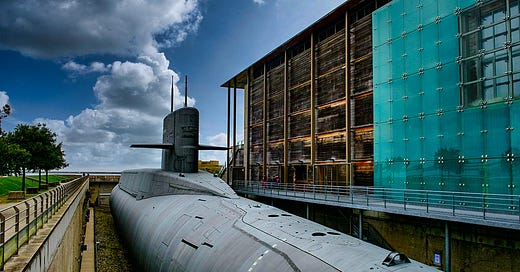Cherbourg - La Cité de la Mer - The Nuclear Submarine Le Redoutable - 1
Visit a submarine
La Cité de la Mer is a maritime museum located in Cherbourg, Normandy, housed in the former Transatlantic Maritime Terminal, a striking Art Deco building inaugurated in 1933. The museum celebrates man’s adventures under the sea, with a focus on ocean exploration and naval history. One of its central attractions is the nuclear submarine Le Redoutable, the first French nuclear-powered ballistic missile submarine (SNLE, Sous-marin Nucléaire Lanceur d’Engins).
Click here to read our introduction to the Cité de la Mer museum.
Click here to read our introduction to the city of Cherbourg.
Click here to see where the nuclear submarine is located on Google Maps.
This is Part 1 of 2 parts. Click here to read Part 2. Or you can subscribe to our free newsletter and receive updates directly in your inbox.
Le Redoutable was launched in 1967 and commissioned in 1971. It was designed and built in Cherbourg by the Direction des Constructions Navales (DCN). Measuring 128 meters in length and displacing more than 8,000 tons when submerged, the submarine was a major step in France’s strategic defense capabilities during the Cold War, forming the backbone of its nuclear deterrent force (Force de Frappe). It could carry 16 strategic missiles and was capable of remaining submerged for long durations without surfacing, thanks to its nuclear propulsion.
After 20 years of service and over 90,000 nautical miles navigated during patrols, Le Redoutable was decommissioned in 1991. It was carefully restored and converted into a museum exhibit, making it the only ballistic missile submarine in the world open to the public. Visitors can walk through most of the submarine, including the command post, crew quarters, and missile launch area. However, the nuclear reactor compartment has been sealed off for safety and decontamination reasons.
Dry dock
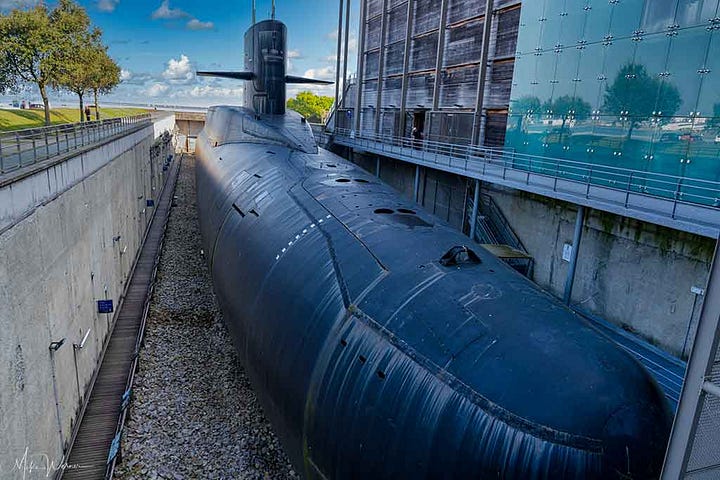
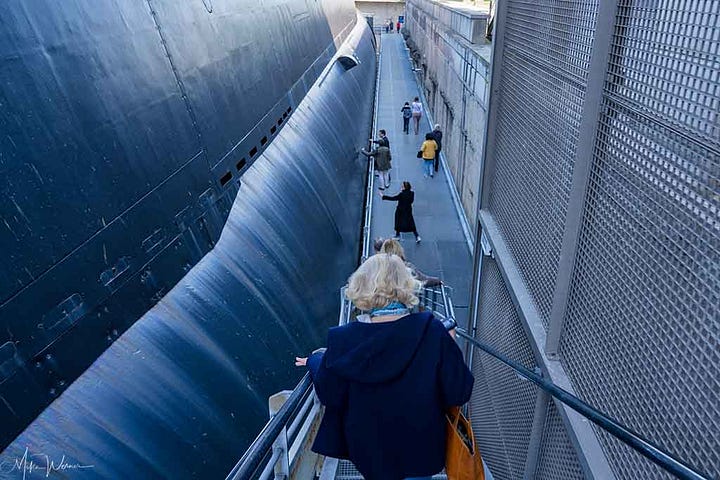
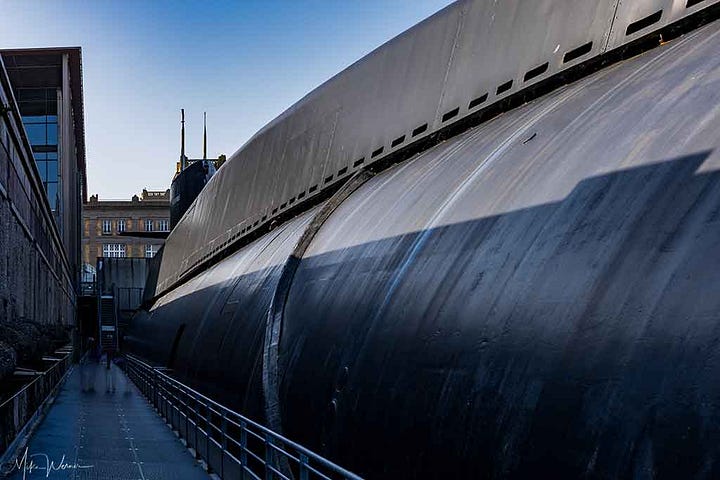
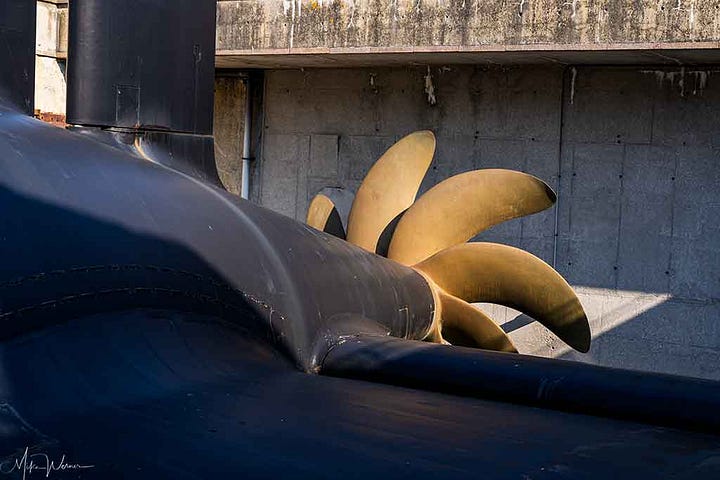
Inside La Cité de la Mer, the submarine is displayed in dry dock, giving a powerful sense of its scale.
The transformation of Le Redoutable into a museum piece was a technical and logistical achievement, requiring dismantling the nuclear reactor, reinforcing the structure for public access, and creating a visitor-friendly experience without altering the authenticity of the submarine’s interior. It remains one of the most popular attractions in Normandy, especially for those interested in naval history, engineering, and Cold War-era technology.
When visiting Le Redoutable at La Cité de la Mer, you walk through nearly the entire length of the submarine—about 100 meters—giving you a vivid, physical sense of what it was like to serve aboard one of the most advanced and secretive war machines of its time. The visit is guided by a multilingual audio device that combines atmospheric sound design with explanations from a former commanding officer, helping visitors grasp both the technical operations and the intense psychological environment inside.
Torpedo room
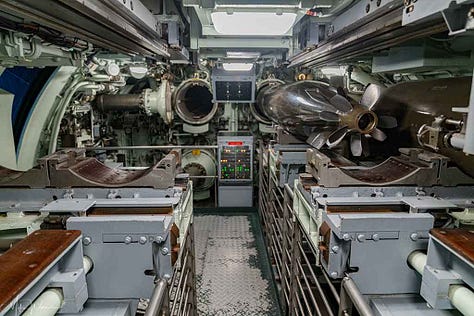
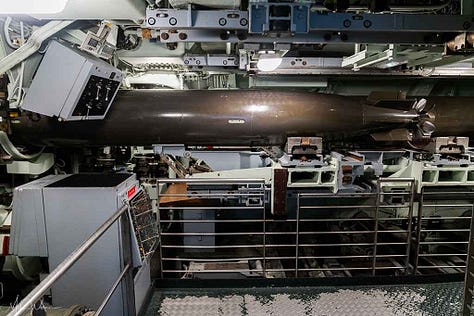

The tour begins in the torpedo room, where the submarine’s attack capabilities are displayed. Torpedoes are laid out in their tubes, and you can see the mechanisms used for loading and firing them.
Corridors
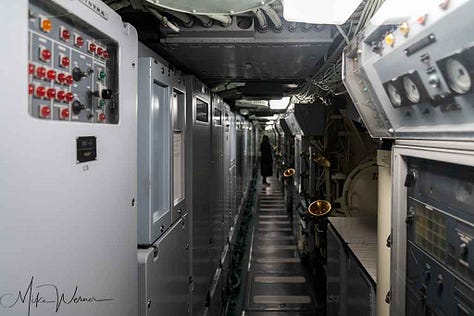
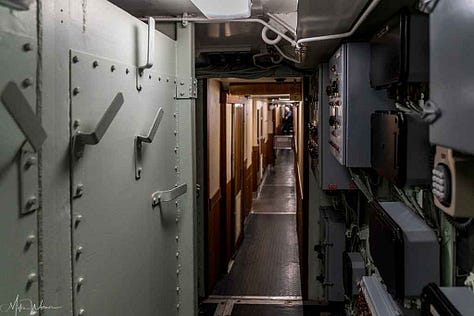
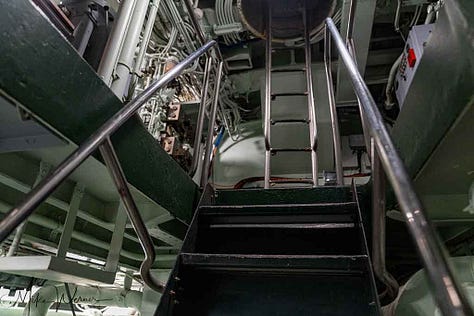
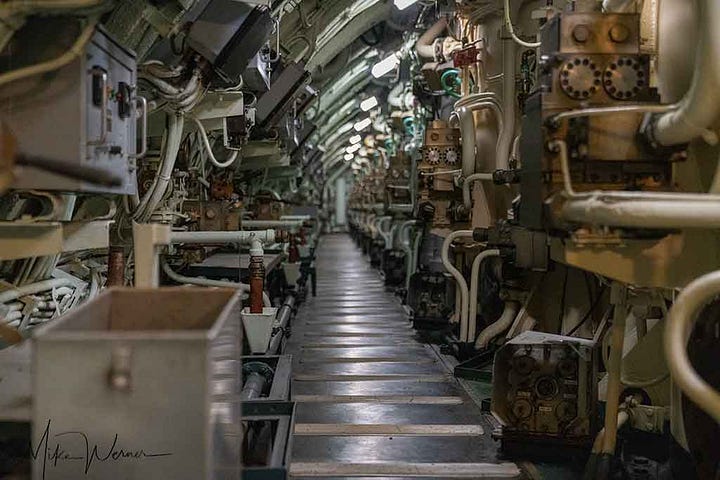
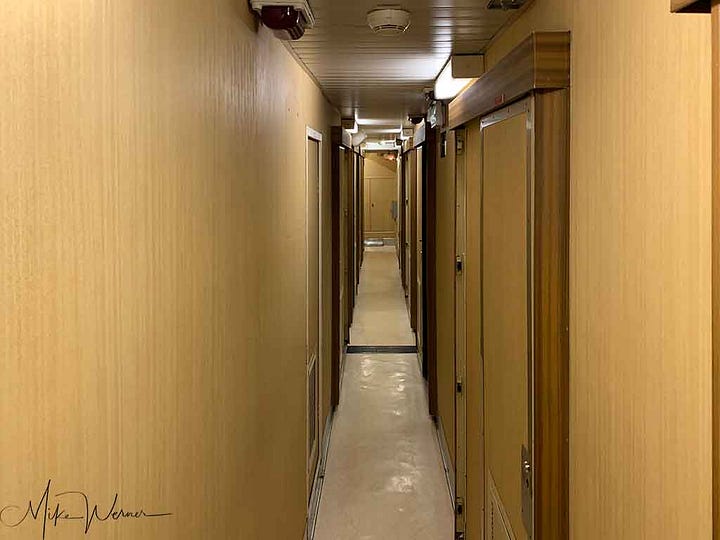
From here, you move through narrow corridors ….
Crew Quarters
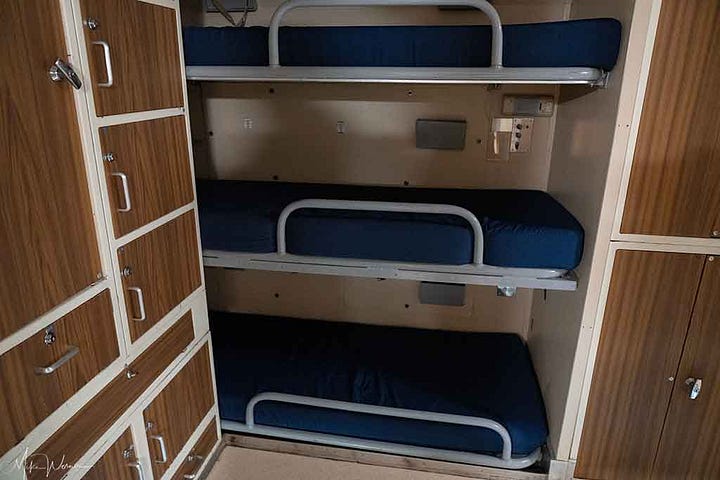
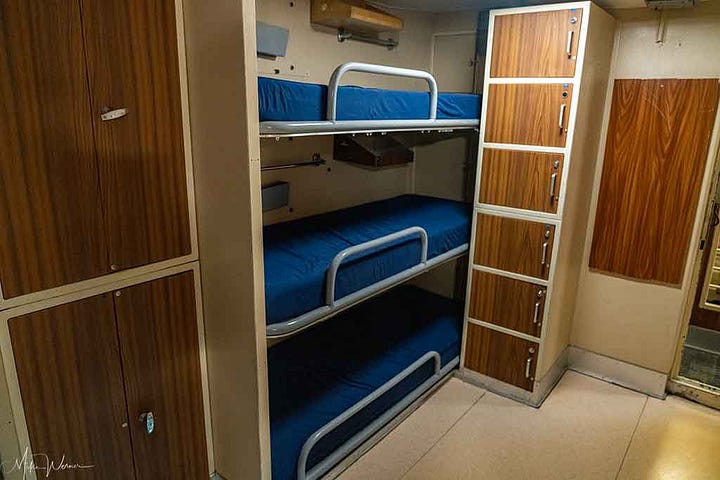
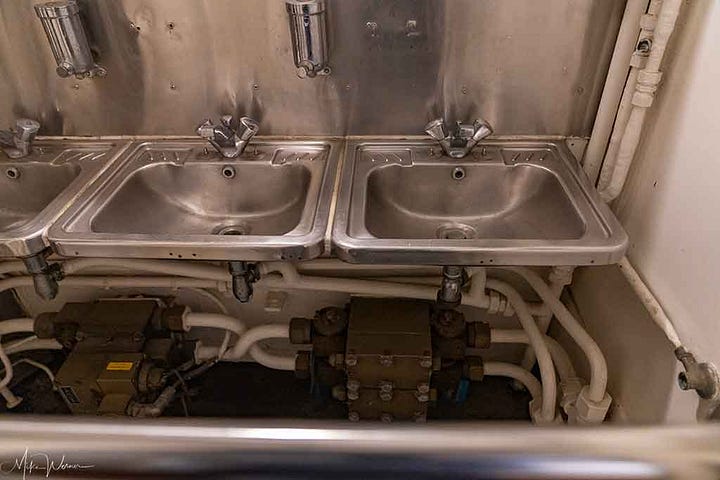
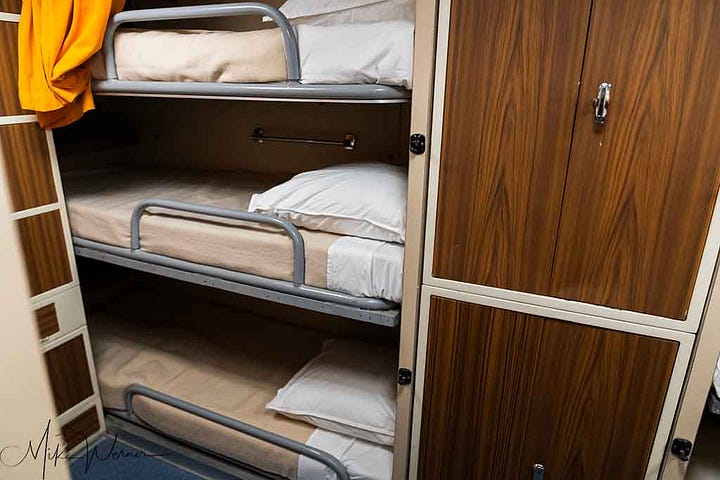
…. into the crew quarters, which reveal the tight, utilitarian living spaces shared by dozens of sailors. You see the triple bunk beds, personal lockers, and the small common areas.
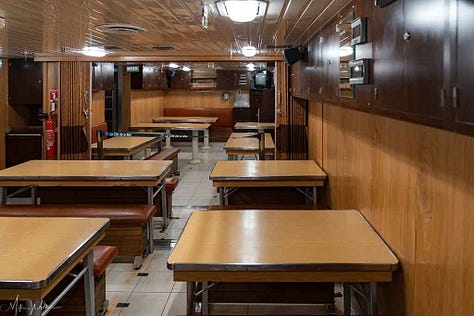
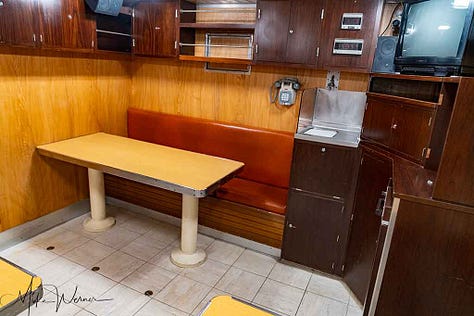
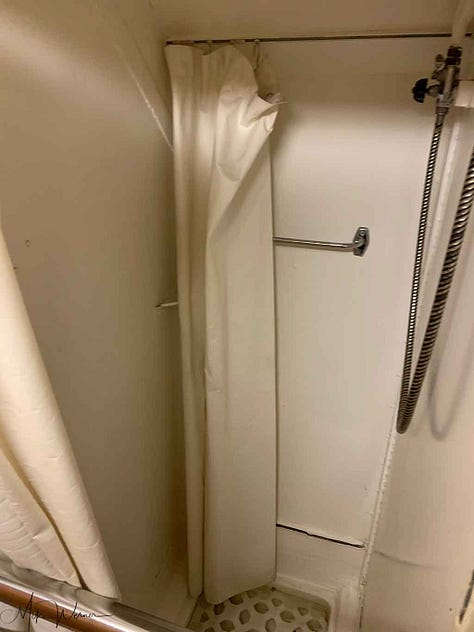
It’s an intimate and almost claustrophobic view into the daily life aboard, especially knowing missions could last for weeks without surfacing.
Command center
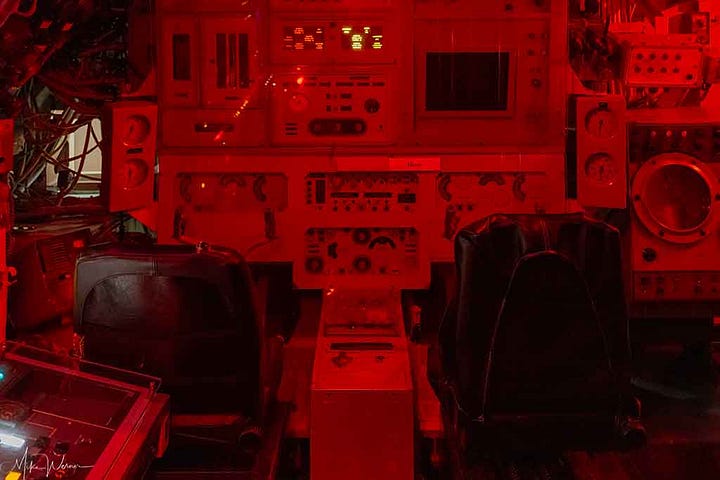

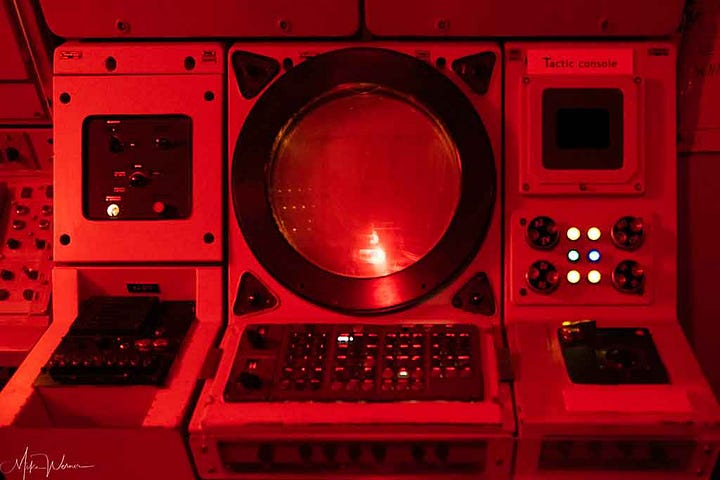
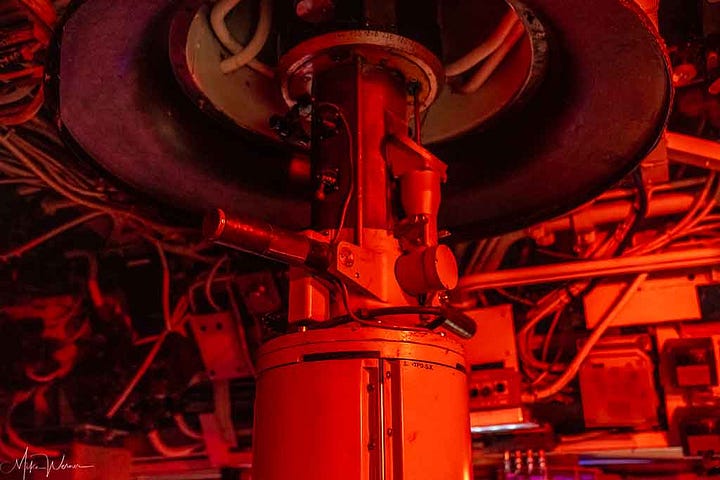
The command center is the nerve center of the submarine and perhaps the most striking part of the visit. Here, visitors see the periscope, sonar stations, navigation and steering systems, and missile launch consoles.
The space is packed with instruments, blinking lights, switches, and controls—almost all original—creating a strong sense of the strategic tension and constant alertness that defined Cold War submarine duty. The periscope can still be used, allowing visitors to look outside the submarine.
This is Part 1 of 2 parts. Click here to read Part 2. Or you can subscribe to our free newsletter and receive updates directly in your inbox.

